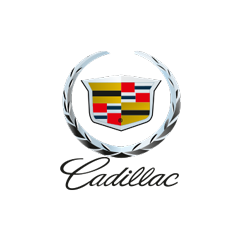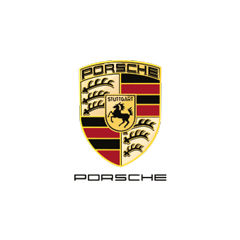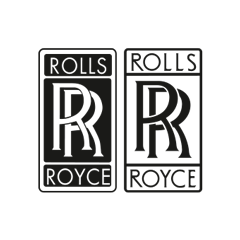
MERCEDES BENZ Typ 770
Generations Timeline, Specs and Pictures
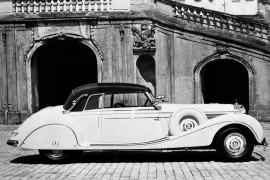
The 770 Grosser, or W07 as it was code-named, received a major revision in 1938, switching to a new 150W label.
The car received all-around improvements having seen the introduction a new oval section tubes chassis and a new suspension system. The older semi-elliptical leaf-spring/solid axle configuration was discarded in favor of a coil-spring layout with front independent suspension and rear de Dion axle. The older W07 engine was upgraded to produce mode power and the transmission received an extra ratio. The W150 was one rare build as well, having been produced in just 88 units throughout its production time.
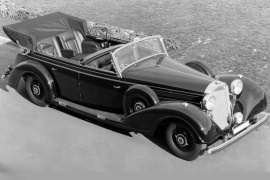
Besides having received a new tubular chassis sustained by a new independent suspension, the second series Grosser also saw numerous cosmetic re-touches.
Door sills were now coupled to both ends by wider, prominent wheel arches while the spare tire received a top cover that mimicked the shaped of the arches, complementing the car’s flowing lines. The power unit received a minor upgrade that lead to a slightly power output increase and the interior was restyled as well. The soft top elegantly folded behind the rear seat row in a cowl-like shape while the car’s rear could be mated to an optional , removable trunk for increased storage space.

Mercedes-Benz surprised the 1938 Berlin International Motor and Motorcycle Show visitors when it unveiled the Model 770, known as the “Grand Mercedes.”
It was the second generation of the “Grand Mercedes” and improved in every way. Max Wagner, who made the famous Silver Arrows race-cars (W124 and W154), designed the chassis. He used his skills and knowledge from motorsport to create a thin-wall oval-shaped frame that was light and strong. And it had to be that way since the car was heavier than some trucks.
The carmaker built 88 units of the W150 model, from which 46 were open-tourers. Their pined-out radiators and thick front bumpers showed power and greatness. Its long hood was flanked on its sides by the spare wheels and the extended wheel-arches. The front doors were rear-hinged, while the rear ones were normal. Thus, the front side occupant could get out quickly and open the back seat passengers’ rear doors. Behind the cabin, the carmaker added a curved, vertical trunk lid.
Inside, the carmaker made a custom-made interior, fit for every customer. Since Mercedes-Benz did not build the 770 on the same assembly line as the rest of the carmaker’s range, each interior was hand-built. The usual materials used were leather and wood veneers. At the front, the carmaker installed an instrument panel in the middle of the dashboard.
Mercedes-Benz created a unique chassis and drivetrain for the 770. Its 7.7-liter supercharged engine featured a higher compression ratio, which led to a total output of 230 hp. Power went to the rear wheels via a five-speed manual transmission. Just remember that some cars had only three-speed at those times. The front independent suspension and the rear DeDion axle provided a comfortable ride and better handling.

Mercedes-Benz introduced the second generation of the “Grand Mercedes” at the 1938 Berlin Automobile and Motorcycle Show, where the three-pointed star stand shined brightly.
It was an important event for the German carmaker. Not only because a man named Adolf Hitler opened the show, but also because its stand hosted Caracciola’s record-breaking car that reached 271 mph (436 kph) and, inevitably, it attracted everyone. Mercedes-Benz unveiled the W150 model, also known as the Grosser Mercedes (Grand Mercedes), in the same stand. A range of cars built for the new government officials and for those who could afford them. Besides the closed versions and the Pullman limousine, the three-pointed star brand showcased the Cabriolet D.
Mercedes built the W150 using Grand Prix technology with independent front suspension and rear DeDion axle with coil springs. The carmaker fully revealed that system on a bare-chassis displayed at the carmaker’s booth. With the Cabriolet D version, the carmaker tried offering more open-top versions for its customers. It featured a front fascia with a V-shaped grille for the radiator, like the rest of its W150 stablemates. However, unlike the Grand Tourer version, it featured a shorter wheelbase. As a result, it was lighter and, thus, faster.
Inside, the Cabriolet D could get up to five occupants since the gear-stick was on the floor and prohibited a third person from staying at the front. The large canvas roof took its place behind the cabin, above the trunk, which was only accessible from the outside. Mercedes installed the spare wheel behind the front wheel arches to keep an elegant look for the car’s back.
Under the hood, the carmaker installed a supercharged engine that produced 230 hp paired with a five-speed manual transmission. As a result, the unofficial maximum speed for the Cabriolet D exceeded 100 mph (161 kph).

The Stadt Coupe may be easily described as an enclave of privacy by simply looking at the car.
This elegant four seater was all about an ego-driven type of segregation with the car having been built with an open front compartment for the driver, and a sealed boxed rear-row compartment. Spare wheel side-encasements were relocated to the rear while the door sills were replaced by pairs of small foot-size plates. Wheel arches had flowing, curvy lines although they weren’t as prominent as the ones fitted on the regular Grosser types. The B-pillar was also discarded to allow a new “suicide” door layout.

The chances of getting an original Cabriolet C today are probably slimmer than those of finding Mr.
Clean shaving his head in your bathroom. Having been built in only 4 units, the car is close to priceless. Sporting a coupe-body type and coachwork slightly different than that of the A and B types, the vehicle was powered by the same 8-cylinder 7.7 L unit which developed the same great torque and power outputs, making it a fast terrain negotiator. However, the car was hardly affordable for the average working class folks, having had a hefty price tag.
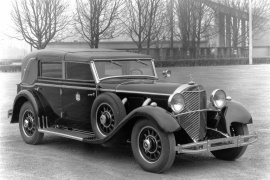
Easily recognizable by its 4-door body, the Cabriolet D was truly a boss’s car with comfortable seats and luxurious upholstery.
Sharing the same features as its differently-lettered siblings, the D type was as good as any of them both by looks and the seat of the pants. Performance and handling came in a visually appealing package with a meticulously finished body mounted on a chassis driven forward by an elegant set of wheels with a choice of wooden spoke or metal disc patterns. Driving pleasure was however hampered by the car’s gas-guzzling engine that gulped as much as 1 gallon once very 7.8 miles.

In 1930, Mercedes-Benz introduced the Grand Mercedes as its flagship, the most luxurious vehicle produced by the German carmaker and offered as a four-door open-top vehicle.
Mercedes-Benz was already known for its luxurious vehicles, and, besides the limousines and coupes, it offered convertible versions as well. It was straightforward to do that in the ’30s when most cars (except Lancia Lambda) featured a body-on-frame construction. Even though it was a heavy vehicle, thanks to its large engine, it could quickly get up to 75 mph (120 kph), which was considered “breathtaking.”
The Cabriolet F was the vehicle used by Kaiser Whilhelm II until his death, and it was indeed a royal vehicle. Its pined-out radiator grille resembled the bow of a battlecruiser. Unlike the rest of the open-top versions, the Cabriolet F had multiple choices to open the vehicle. The driver’s area was covered or uncovered independently from the passengers’ area. Moreover, the carmaker added a panel and a windscreen between those areas, so the driver couldn’t hear the talks in the back.
Also, there were different materials used for the driver and for the passengers’ seats. In the back, there was the finest leather upholstery available on the market and natural wood veneers. Since it was primarily built for high-ranking officials, Mercedes-Benz added an option for a handle in front of the rear seats, so the passenger could stand up while waving to the crowds.
Mercedes-Benz installed an inline-eight engine under the long Grosser-Mercedes hood. It was offered with or without a supercharger and offered the possibility to install the blower afterward if the owner considered it.
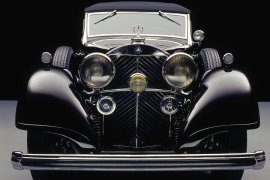
After a two year development, Mercedes-Benz launched the “Grand Mercedes” at the end of 1930.
It was the most luxurious vehicle offered by the German car-maker.
The Grosser Mercedes, or Grand Mercedes, W07 was intended to be the ultimate luxury and performance vehicle. The specialized publications from the era recorded that the car was safe to drive even at “breathtaking speeds of over 120 kph” (75 mph). The Grand Mercedes was offered with a supercharged or naturally aspirated engine.
It was one of the most expensive cars from its era and it was built to carry up to seven passengers aboard. It shared the same chassis with the Cabriolet D, with a long wheelbase and four doors. The three-row seating arrangement was considered a luxury design. In front of the last row of seats, it featured a removable additional windshield. The canvas-top was long enough to cover all three rows and it was carried over from the Cabriolet D.
The W07 Grosser Mercedes was produced in 117 units and the most common body version was the Pullman saloon with 42 units, followed by the Tourenwagen (open tourer) with 29 units. Unlike its Cabriolet D sibling, the Tourenwagen was offered exclusively with a supercharged engine. The eight-cylinder engine offered 200 hp and it was mated to a 3-speed gearbox via a twin-disc clutch system.

One of the rarest cars ever produced, only two Grosser Cabriolet B units were built.
Sporting the same rigid front and rare suspension systems comprising leaf springs and live axles, as seen on the Cabriolet A as well as the same large 8-cylinder 7.7 L power plant, the Grosser was a rugged, luxurious ride with plenty of power and firmness for whatever roads it may have been driven onto. Size came with 5952.5 pounds of weight, making the Grosser a little heavier than most modern European SUVs. Power and weight were complemented by an efficient braking system boasting all-wheel pneumatic Bosch-Dewandre brakes.
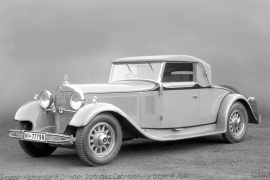
After a two year development, Mercedes-Benz launched the “Grand Mercedes” at the end of 1930.
It was the most luxurious vehicle offered by the German car-maker.
The Grosser Mercedes, or Grand Mercedes, W07 was intended to be the ultimate luxury and performance vehicle. The specialized publications from the era recorded that the car was safe to drive even at “breathtaking speeds of over 120 kph” (75 mph). The Grand Mercedes was offered with a supercharged or naturally aspirated engine.
The Cabriolet A was, in fact, a factory-supplied chassis with an engine without the supercharger. That was a rare model since only 13 vehicles without superchargers were built. Among the body assemblers who received bare chassis for completion was the small company Auer, Stuttgart-Bad Cannstatt, with which Daimler had a long history before 1900. Auer designed an unusual cabriolet version for the naturally aspirated engine with two doors and two seats. Behind the doors, two hatches could have been opened to place luggage. In the back, the car featured two spare-wheels on the rear-end of the car. The 17” wheels were fitted with 8.25 x 17 low-pressure tires.
The car was sold by Mercedes-Benz as a bare chassis for the price of RM 29.500, after the RM 3000 reduction for not fitting the engine with a belt-driven supercharger. The chassis was supplied with an engine, a 4-speed manual gearbox, a two-speed transfer box, dashboard, and the windshield. The interior was fitted with individually selected materials.
Since those cabriolet versions were not designed and manufactured by the Mercedes-Benz, they were assigned with the “Cabriolet A” names.






